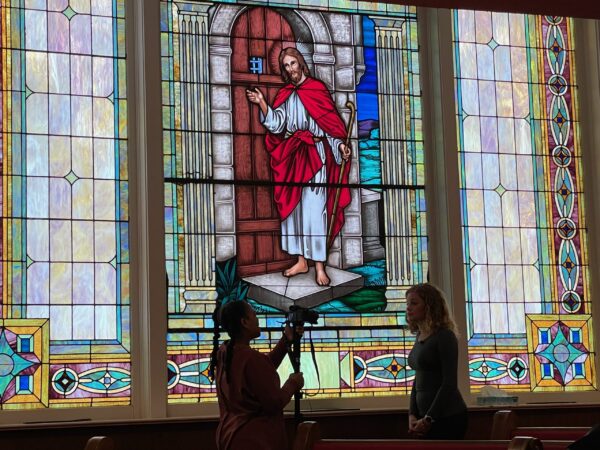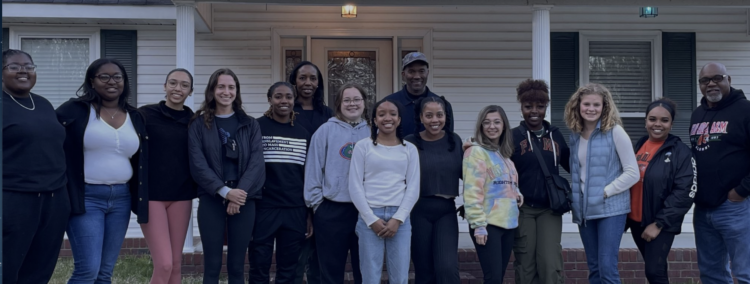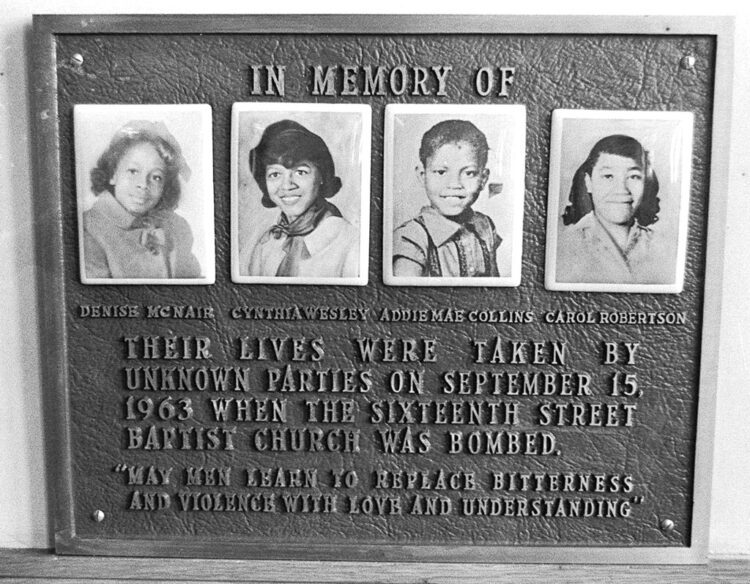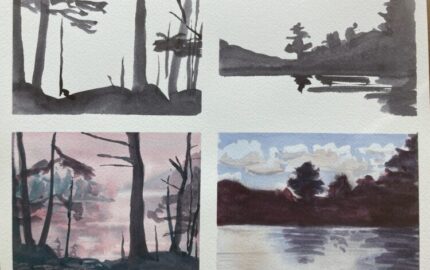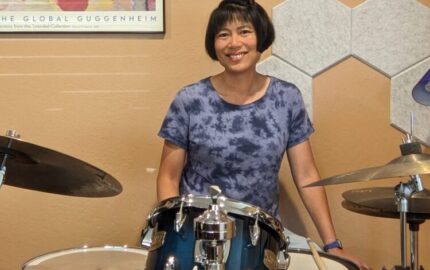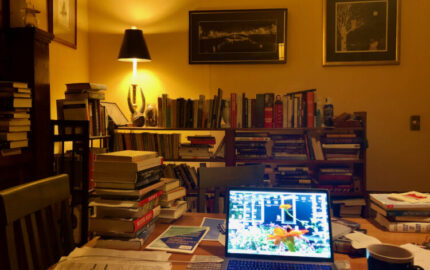In my favorite moment of the 25-minute documentary, “Reporting From the U.S. Civil Rights Trail,” one of my students is descending church steps in Alabama to do a TV standup:
All eyes were on Birmingham, here at the Sixteenth Street Baptist Church 60 years ago, when four young girls were killed by a bomb.
The student, Serra Sowers of Longwood, Florida, is a junior at the University of Florida. But on this day, she was using all the tools of professional journalism to report a story. She was one of several students who spent time touring the church, and then interviewing a long-time member about the bombing. Gabriela Rodriguez, a senior from North Miami Beach, said it was “really astonishing” to be inside the edifice, to learn not only about its role during America’s Civil Rights Movement, but also how it’s evolved over the years as an institution.
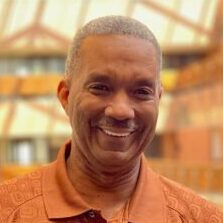
Earlier this year, seven students from UF in Gainesville joined four from Florida Agricultural and Mechanical University (FAMU) in Tallahassee for an eight day, 2,800 mile, reporting trip across the U.S. Civil Rights Trail in Alabama, Arkansas, Georgia, Mississippi and Tennessee. We dubbed ourselves UFxFAMU1963.
The Sept. 15, 1963, bombing stands as a seminal event of the movement, as the deaths of four innocent girls in a church — more so than the countless lives lost to lynching and other violence in the decades before — rocked “the conscience of a nation,” as Debbie Elliott reported for NPR.
Last semester, our students revisited that history through a journalistic lens. The goal of the reporting trip was not just to help them see how history informs the present — including how it has shaped their own lives — but to understand journalism’s role in social movements. A further goal was to help them see how a journalistic inquiry can enhance clarity, relevance and empathy.
I spent more than 20 years as a newspaper reporter, including at the Philadelphia Inquirer and Newsday. I joined academia in 2010, and am now a senior lecturer teaching courses on multimedia journalism and the intersection of race, sports and culture at UF’s College of Journalism and Communications. As part of my teaching, I enjoy enabling students — whether or not they want a journalism career — to understand those connections.
Teaching history through journalism
A classic, invaluable way to do that in academe is through books. But books can be a detached way to learn. The more time that elapses, the more detached our learning, and thus a comfortable distance between our abstract knowledge and our daily lives. Journalist and journalism educator Deborah Douglas confronted that directly in her 2021 book “U.S. Civil Rights Trail: A Traveler’s Guide to the People, Places and Events That Made the Movement”:
Somewhere along the way, the question was raised: Why travel the civil rights trail when you can read books, watch films, listen to podcasts and learn about the history in any number of other ways?
In envisioning the civil rights trail trip, I definitely considered casting it as if merely teaching sociology or history. It would have been a lot less work, only requiring students to keep daily journals and submit lengthy reflection papers.
But that’s not my style. It was important to me that this trip be framed as a journalism course — one in which everyone in the 15-seat passenger van would strive to tell stories using text, images, audio, video, data and social media to help see and learn from their experiences. Douglas’ book could help us map our route, but it wasn’t going to help my students understand the pivotal role that journalists and newspapers — both the white media and the Black Press, for better or worse — played before and during the Civil Rights Movement.
Again, centering the trip in journalism would ensure the students would not merely travel as tourists. Requiring that they pursue individual and group reporting assignments ensured that they talk to people they didn’t know (and, yes, people who were living as young people themselves amid all of the drama and trauma of the movement). The graded, hands-on work also made them apply their multimedia journalism lessons with intentionality; a team-produced, broadcast-quality documentary was always a key goal.
Moreover, they had to learn about the relevance social history holds today, just as any veteran journalist does on assignment. They had to ask different questions of their sources than when covering stories typical of a campus newspaper focusing on concerns of college students.
In class, we reviewed some of the major civil rights events of 1963. They also included the Children’s Crusade in Birmingham; Gov. George Wallace’s failed bid to keep the University of Alabama segregated; Medgar Evers’ assassination in Jackson, Mississippi, and the March on Washington culminating with the Rev. Martin Luther King Jr.’s “I Have A Dream” speech.
Understanding the role of the press in history
My UF students also read “The Race Beat: The Press, the Civil Rights Struggle and the Awakening of a Nation,” written by veteran journalists Gene Roberts and Hank Klibanoff and winner of the 2007 Pulitzer Prize in history. They devoured its 407 pages in the seven weeks before our spring break trip. They read about things they hadn’t learned about in elementary or high school: Emmett Till’s murder in the Mississippi Delta; the Montgomery (Alabama) Bus Boycott; the Little Rock Nine in Arkansas; that police in Birmingham unleashed fire hoses, batons and dogs against hundreds of teenagers protesting for civil rights in the park across from Sixteenth Street Baptist. They also learned about Bloody Sunday in Selma, Alabama, and about the Black sanitation workers strike in Memphis, Tennessee, that led King to his assassination.
And they discovered that many journalists risked their lives and livelihoods to show the nation what was happening in the South, including about some of the southern editors who sided with segregationists in advocating for massive resistance against integration. It raised questions for the students as they consider present-day fights for civil and human rights in and beyond the Black community.
Paris Coughlin, a senior from Charlotte, North Carolina, says she thought of the “Race Beat” reporters as she read news about anti-trans bills, drag queens being arrested and book bannings. She posted this in a reflection on the website that accompanied the project documentary:
For the ones in it that weren’t outright pro- or anti-segregation, how did they remain unbiased? How did they, when amid an angry violent mob, not fight back? How did they fight the urge to give in and do something? My journalism instructors are telling me that I must follow their same path.
Another factor for me in planning the civil rights trail trip was the racial mix of my students: The seven from UF included four who are white, two African Americans and one Latina.
Enter my wife, Mira Lowe, who worked as an editor at CNN, JET Magazine, Ebony magazine and Newsday — as well as the newsroom leader at our college at UF — before becoming dean in 2021 at the School of Journalism & Graphic Communication at FAMU, a historically Black college. Working with Stanley Johnson, a visiting professor, Mira made it possible for four photography students from FAMU to take the trip. They met me, my students and my UF co-instructor Kalisha Whitman virtually not long before the trip began. As Mira told me:
“I wanted our students to see for themselves some of the places central to – and to hear from some of the people who were part of the Civil Rights Movement. I also wanted them to do so alongside the type of students they don’t get to engage with that often.”
She also noted the vital role that photojournalism played in thrusting the events of 1963 and the African American experience to the nation and world:
“I wanted my students to utilize what they were learning in class to tell their own stories from the trail.”
Crammed with our audiovisual equipment and luggage in the van, we visited, among other places, The Legacy Museum: From Enslavement to Mass Incarceration, in Montgomery; the Edmond Pettus Bridge, in Selma; Mississippi Civil Rights Museum and the Medgar and Myrlie Evers Home National Monument, both in Jackson; Bryant’s Grocery Store (what’s left of it) and the Emmitt Till Historic Intrepid Center, in the Delta; the Little Rock Central High School National Historic Site; the National Civil Rights Museum at the Lorraine Motel in Memphis; Foster Auditorium, site of Wallace’s schoolhouse stand; Birmingham Civil Rights Institute, and the King Center in Atlanta. It was a lot to take in for both students and faculty.
Far more than a field trip
Sandra McDonald, a UF junior from Ocala, Florida, admitted afterward that she thought the trip would be essentially a vacation. That changed for her at 9 a.m. the first day, when the group was confronted with the Middle Passage — how Africans came across the Atlantic from Africa to slavery in America — soon after entering the doors of the Legacy Museum.
“We got there and we realized how much work there was to be done. How many words there were to be written. And I kind of had a moment where I realized I needed to equip myself to be a part of that,” McDonald told WUFT-FM, the NPR affiliate based in Gainesville. “To stand in some of these places and contextualize them for myself in a way that I haven’t ever done before, it’s priceless. It changes the way you see the world. It changes the way you do your work – your reporting. This is one of those experiences that I will be recounting forever.”
McDonald also said it was “unreal in some way” to meet people who were part of U.S. history. “Some of the people that we spoke to were children or very young adults during the ’60s when they experienced all of these events,” she said. “Now they’re 60 years older, and with that time comes wisdom, and the things they imparted onto us are going to stick with me forever.”
In a resulting news website and the documentary, UFxFAMU1963 write and speak of their journey not through politics or ideology, but generationally and as student journalists.
Akiva Bell, a sophomore psychology major at FAMU and from Miami, said the trip left her inspired to pick up the mantle from those who sacrificed so much 60 years ago:
“Most of my conversations (once back home) existed around what can be done to change what I just saw. My emotions after the trip were all over the place, but mostly sat in anger, because I knew there was more that I could do as a person to discontinue the regurgitated history that doesn’t better African Americans.”
From driving all 2,800 miles of the trip myself to having to find hotel rooms in multiple cities, not to mention identifying and making reservations at all of the museums we visited, UFxFAMU1963 is the most difficult and most rewarding experience of my academic life. I will never forget watching the students, for example, come to tears as a grandmotherly civil rights activist in Alabama recounted for them what she fought for and through as a young mother in the ‘60s; at the same time, those students stayed professional, using their high-caliber audio and video equipment to capture the group interview. It was just one of the moments that made all the planning worthwhile.
I’m grateful these 11 young women trusted me enough to readily and collectively tell the stories of extraordinary people who may not be here for the 70th anniversary of what happened in 1963. I urge you to read their reflection essays and enjoy their reporting outcomes.
From the UF students:
- “A Lot More to Learn: History Shows That My People Always Rise Above,” by senior Jennica Clerveaux, presents a video about the impact of youth in the movement, and another about a related trip to St. Augustine that she videotaped and scripted.
- “A Seat at the Table: What It Means to Call the South Home,” by senior Paris Coughlin, presents a video and source-narrated audio reports that spotlight people from along the trail and who shared their perspectives about living in the South.
- “Music of the Movement: The Message Won’t Be Silenced,” by freshman Sydney Johnson, offers an audio report from the Delta Blues Museum in Clarksdale, Mississippi, and an interactive playlist of 12 songs from the movement era.
- “Bridging the Bias: Confronting Southern Stereotypes,” features senior Taylor Mayer “live” on a local TV newscast to introduce her segment on UFxFAMU1963, and her interactive StoryMap and first-person video about the St. Augustine trip.
- “Standing in the Past: What Better Way to Appreciate and Not Forget?” offers multiple short videos of junior Sandra McDonald standing in momentous places from the Civil Rights Movement and offering her perspective.
- “Soul of the South: What Was Once Frightening Becomes Enlightening,” by senior Gabriela Rodriguez, features a video and audio stories about people met on the trail, including a hotel employee in Selma, Alabama, talking about the city’s past and present.
- “The Struggle Isn’t Over: Learning Why Black History Matters,” by junior Serra Sowers, offers audio reports about three Alabamans who the students met in Birmingham and Tuscaloosa.
The FAMU students – sophomore Akiva Bell, junior Brianna Luberisse, junior Aiyanna Summerlin and sophomore Peryonna Sylvester – present their photojournalism on their respective webpages.
* * *
Herbert Lowe teaches multimedia journalism and the intersection of race, sports and culture at the University of Florida College of Journalism and Communications in Gainesville. He worked for 22 years as a reporter at several daily newspapers and is a past president of the National Association of Black Journalists.
